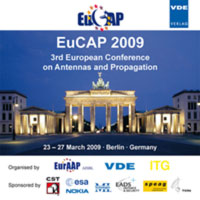Cooperative Diversity Performance in Millimeter Wave Wireless Mesh Networks: Outage Analysis
Konferenz: EuCAP 2009 - 3rd European Conference on Antennas and Propagation
23.03.2009 - 27.03.2009 in Berlin, Germany
Tagungsband: EuCAP 2009
Seiten: 5Sprache: EnglischTyp: PDF
Persönliche VDE-Mitglieder erhalten auf diesen Artikel 10% Rabatt
Autoren:
Sakarellos, V. K.; Skraparlis, D.; Panagopoulos, A. D.; Kanellopoulos, J. D. (Wireless & Satellite Communications Group, Division of Transmission Systems and Materials Technology, School of Electrical and Computer Engineering, National Technical University of Athens, 9, Iroon Polytechniou str., Athens, Zografou, GR-15780)
Inhalt:
Cooperative diversity techniques have been proposed to improve the performance of modern wireless mesh networks. The increased demand for bandwidth has led to the employment of frequencies above 10 GHz, where the dominant fading mechanism is rain attenuation. The rain attenuation induced on a microwave path is usually modelled as a lognormal random variable. In this paper, the outage performance analysis of a cooperative diversity system operating at frequencies above 10 GHz is presented, employing spatially correlated lognormal fading channels. The final destination node combines the direct link signal with a signal received through a regenerative (decode-and- forward) relay using Selection Combining. Various multiple-access protocols are considered, while energy and spectral efficiency are investigated. Extended numerical results present the impact of various operational, geometrical and geographical on the system performance. Finally, comparison with an effective direct link highlights the gain of cooperative diversity techniques.


